Fighting The French & Indian War On The Tabletop: The Bloody Pond & Using Cannons
January 25, 2016 by crew
Hello again fellow history buffs time to sit back and relax yet again as we delve a little deeper into our journey through the French & Indian War. Read the rest of the series HERE.
In this article we’ll be looking at the aftermath of the Battle of the Monongahela and the Johnson expedition plus a Scenario for you to try at home using the Muskets & Tomahawks rule set.
The Aftermath
General Braddock is dead and his force is in shambles with most of the men either dead or wounded and those that can still walk fleeing. Something was about to happen that would make the French & Indian War stand out in modern warfare of the time. As the British flying column disintegrated the rear-guard also began to retreat leaving many of their wagons and cannon behind. Without the protection of soldiers the column of camp followers was an easy target.
The Native Americans attacked the column taking prisoners and killing men and women. Most sources state that out of the fifty women who set out with General Braddock only four made it back with the soldiers, the rest either being ransomed by the French from their native Allies and ending up in Canada or being adopted by native American families to replace family members killed during battle.
It is important to remember that to the Native Americans this was seen as a basic and normal response with the taking of captives, scalps and loot being encouraged to prove you had fought and were brave. To the Europeans the actions of the Natives was seen as barbaric slaughter but to the natives what was barbaric slaughter was giving them such good targets in the form of infantry blocks.
Washington ordered General Braddock to be buried on the road and for the men to walk over his grave so that his body could not be tampered with by the enemy.
The Johnson Expedition
While up until now the War had been very one sided the British were about to even things out a bit with the Johnson Expedition. Johnson had arrived at Fort Edward and fortified it which left the French in a difficult position since their Native Allies were reluctant to attack a strongly defended fort, especially one without cover to skirmish nearby. The two forces met at the Battle of Lake George.
The French General Erdman had approximately 1500 troops under his command including French, Native American and Canadian troops while General Johnson had 1500 Provincials and 200 Native American Allies lead by Hendrick Theyanoguin who was a Native American that was friends with Johnson and had converted to Christianity, been to London and visited Queen Anne.
The two forces met in what we now call the Bloody Morning Scout occurring on the 8th of September 1755 when French forces mainly composing of Native Americans ambushed the British vanguard killing their leaders in Williams and Hendrick. Some sources state that one French allied Native American called out to Hendrick and tried to warn him not wanting to spill Mohawk blood.
The ambush was a success and many men in the vanguard were killed causing the rest of the men to retreat covered by skirmishing Colonials and Native Americans who inflicted heavy casualties on pursuing French regulars. Among the French Casualties was Jacques Legardeur de Saint-Pierre whose death caused a drop in moral in both Native American and Canadian troops.
The Canadians and Native Americans then reformed and were ordered to attack Johnson's camp. The Caughnawagas refused to attack for much the same reason they had refused to attack Fort Edward as Johnson's camp was well defended but most importantly is was defended by Native American’s from the Mohawk tribe.
The Caughnawagas refused to directly attack their “Mohawk Kinsmen” causing the Abenakis to also refuse to attack without the Caughnawagas. The Canadians then wouldn’t attack with Native American support.
This left the French in a precarious position as they couldn’t simply leave Johnson to regroup and go on the offensive. So in an attempt to spur some of the Auxiliaries into action Baron Dieskau formed up over 200 French Grenadiers into an attack column six men wide and lead them from the front in an attack on Johnson's camp.
The Grenadiers were forced to retreat by the troops in the camp supported by three Cannons which covered the field they attacked over although both Johnson and Dieskau were wounded during the action.
The Bloody Pond
Colonel Blanchard was left in command of Fort Edward and after getting reports of a battle sent out two groups of Provincial troops. The first group was under the command of Nathan Folsom and comprised of eighty men from New Hampshire while the second group was led by Captain McGennis with forty men from New York.
The Provincials left the fort and headed towards the sounds of cannon fire but on the way stumbled on the French supplies. They attacked the guards of the baggage who fled and they proceeded to raid the wagons before taking up positions around them in concealed locations.
When the Canadians and Native Americans arrived back at the baggage site they were fired upon by the British Provincials who killed many of them using the same tactics that had been used during the Battle of the Monongahela. This was known as “The Indian Mode” or “The Indian Way”.
This action became known as the Bloody Pond because after the battle the bodies of the dead were thrown into a small pond turning it’s water red. Seven British soldiers died during the battle including Captain McGennis (Noticing a pattern yet?).
While the Battle is officially seen as inconclusive Johnson was able to advance further and construct Fort William Henry which we will look at more next time.
Cannons
In closing lets look at something new this time and that is Cannons. Think of a Cannon like a modern Fighter Jet supporting Ground Troops rather than modern artillery. They identify threats and bombard them, usually opening the battle, trading fire with other cannons and end it by covering the withdrawal or being placed in defensive positions around the camp.
Like modern aircraft the Cannon plays a vital support role for ground troops being able to quickly adjust their fire to combat threats and having a variety of payloads which can be deployed against an enemy quickly and on demand.
The most common and widely used type of Cannon of the period was called many things by many people but the most common name for it was the six pounder. it was named as such because it fired a six pound ball much like we’d call a weapon a “Fifty Cal” today.
Cannons had two general types of ammunition that were widely used. Solid Shot was a metal or stone ball with the second ammunition being known as Grapeshot which is basically loading either Grapeshot, Canister of bullets or anything on hand into the cannon for close range combat essentially turning it into a giant shotgun.
Cannons would normally be deployed on a high position with a good line of sight to the battlefield and where they were unlikely to be assaulted by cavalry. The cavalry were notorious not only because they could route the cannon crews but also because they would carry stakes with them which would be hammered into the cannons touch hole (or vent) to stop it being used again.
Try The Bloody Morning Scout
Now, since this is an article on gaming in the French & Indian War I thought I should give you all a scenario to play at home. I played this scenario with a friend of mine and it went quite well resulting in a fun evening. Remember the scenario isn't designed to be balanced but rather to recreate the circumstances of the battle while still giving both players the chance to succeed. The scenario is based on the Bloody Morning Scout...
You will need...
- 24x British Provincials
- 24x Indians
- 1x Officer
- 1x Sachem
- 24x French Line Infantry
- 12x Canadian Militia
- 12x Indians
- 1x Officer on Horseback
Ignore the rule for officers not being targets if within a certain distance of friendly troops. All Indian and Canadian units receive +1 to their reaction tests while the French Officer is alive
Deploy twelve British provincials in one unit, six Indians and both the Officer and Sachem in the centre of the board. Twelve inches away from the British Group deploy everything except the Officer and French Line Infantry. These soldiers will move on from a board edge during their first activation. Deploy the remaining British forces along the opposite board edge to the one the French will enter from.
Each of the French ambushing units gets a single free action before the game begins simulating their sudden attack.
Happy Gaming and please let me know if you have any questions
If you would like to write an article for Beasts of War then please contact me at [email protected] for more information!
"To the Europeans the actions of the Natives was seen as barbaric slaughter but to the natives what was barbaric slaughter was giving them such good targets in the form of infantry blocks..."
Supported by (Turn Off)
Supported by (Turn Off)
"...seven British soldiers died during the battle including Captain McGennis (Noticing a pattern yet?)"
Supported by (Turn Off)









































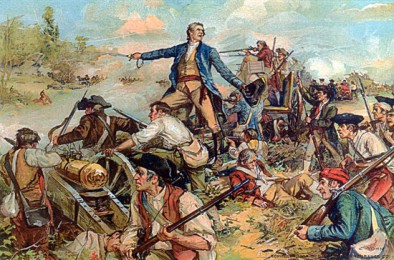
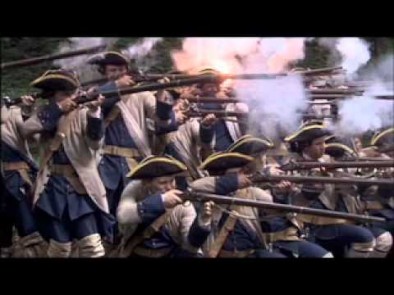
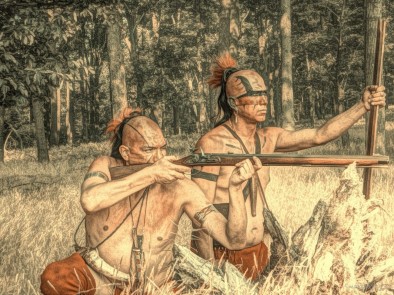
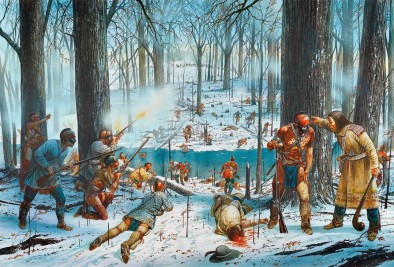

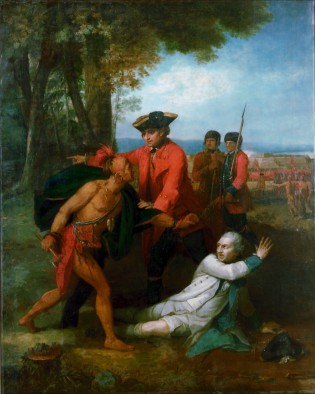
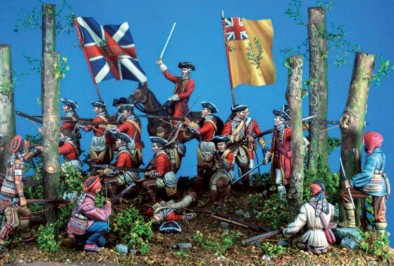
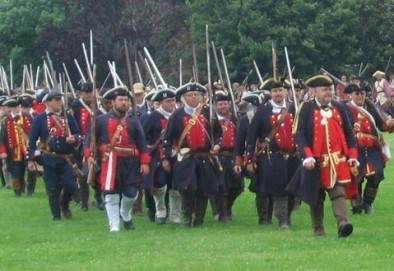
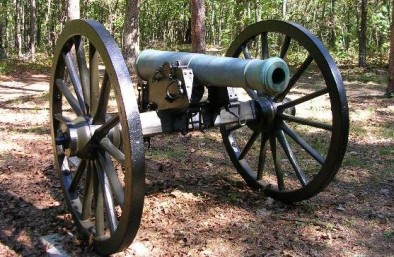
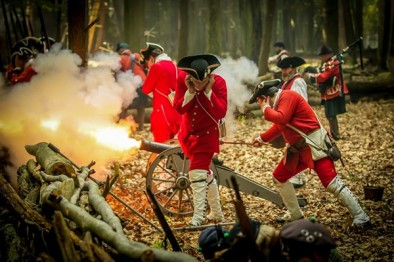
































Another great article, @Elessar2590 . So you mention Fort Edward and Fort George? These were near the south end of Lake Champlain in upstate New York? I only ask because armies again operated around these forts in the 1777 Saratoga campaign, if indeed they are the same ones. Thank you very much for specifying the kinds of artillery ammunition commonly available during this period. I swear, if I see one more “Patriot” style movie with exploding cannonballs (of course I’m not talking about siege mortars, etc.). I’ll do some research on Muskets and Tomahawks . . . is this a… Read more »
M&T is a 1-1 skirmish game. Each miniature represents one person on the table. it’s an excellent game that can be used for FIW and AWI. With a little tweaking it could pass for any black powder era skirmish.
Koraski’s right. The next article is actually purely based on the game itself. Fort Edward is that Fort Edward but Fort William Henry was destroyed by the French. Other forts were built in the same general area and I think Fort George might have been very close to it. I could not agree more about exploding cannon balls and they can sometimes ruin a good movie. M&T is meant to represent a platoon on a scouting mission or a small detachment so it’s pretty close to 1-1.
Awesome. I will definitely look into Muskets and Tomahawks. 😀 I have a bunch of 20mm AWI figures that are too big to use in actual “set piece” battle games (I don’t want to paint hundreds or thousands of these guys) so M&T sounds like a good fit.
There were two Fort Georges, the one near Lake Champlain, which took part in in the above battle and later the American Revolution. The second was involved in the American invasion of Upper Canada in the war of 1812, it is located along the mouth of the Niagara.
This is meant to be good
http://dadiepiombo.it/english-smoothandrifled.html
The advantage is when you bought it all the supplement’s for varying periods are free to download
I picked that up a few days ago but heaven’t tried it yet. So many free expansions is a massive bonus (and really what made me buy it).
They have released a mediveal version of it now as well
That’s awesome I’ll have to take a look, another great use for all that Saga stuff.
a nice informative article.